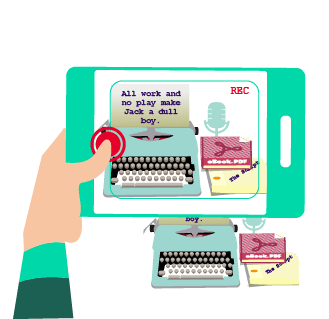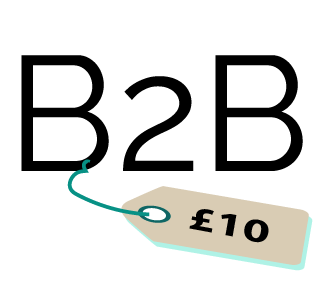Welcome to part two of our handy guide to content marketing. If you’ve read part 1 of my guide to content marketing, you probably have a solid understanding of what content marketing is and why you should be implementing it for your brand.
Now we come to the meat of content marketing – the types of content you can publish to create results.
Chances are you’re probably already using one or more of these types of content to promote your business.
There are six types of content to produce and create. There are advantages and disadvantages to every kind of content medium.
The key is to mix things up and provide a variety of these six types of content, to keep things fresh for your audience.
1. Text Content

Text content is arguably the most common type of content you’ll find online, and includes things such as articles and blog posts.
Why? Because they are easy to produce and they carry information that is targeted at helping the audience solve a particular problem.
Most online articles are usually short in length, easy to read, and only take a few minutes to read through.
Here are some types of articles you can produce:
Step-By-Step
Since most articles are of the how-to variety, they often lead the reader through a series of steps, like a short how-to guide. If you’ve ever used wikiHow, you’ll be familiar with this style of article writing.
This type of blog is a great chance to take something your audience has difficulty doing and slowly walk them through the process, as an authority.
An article may cover how to bake a cake, how to change a tire, or how to set up a home Wi-Fi network.
Tips
Many of the articles you find online offer tips and guidance on how to do or improve something.
Tips are little titbits of info from your expertise or research that make doing something more accessible, like changing car engine oil, tips on setting up a Facebook fan page, or even tips on getting your kids to eat vegetables.
Beginner’s Guide
Some articles offer essential information to inform people or to help them make the right purchasing decisions.
For example, you might write an article on the different varieties of red wine, the basics of a golf swing, or how a hybrid engine works.
Beginner’s guides are a great first base of contact with potential consumers. If you can absorb them as a novice, then they’ll see you as an authority in their eyes and come back to you for further guidance, products or services.
Listicle
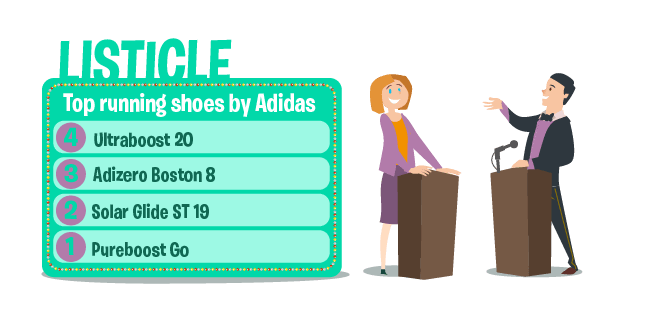
A listicle is an article that is also a list (List + article = listicle).
People love listicles, and they are easy to produce, which makes them an ideal choice for text content.
In fact, listicles are so popular that there are entire websites that produce only listicles, such as Listverse.
Listicles are easy to create. Make a numbered list, or a countdown list and include a short paragraph of information for each item.
A listicle can be top running shoes made by Adidas, six things you should never say or do on a date, or 24 uses for duct tape.
You can even write short news articles that cover a current event related to your customers and your brand.
To make it easy, you can just share a story and write up a short summary, together with your opinion about the item in the list.
Interviews
Picking the brain of an expert is a great way to create compelling content and prove your brand as a reputable source of information.
Create an interview with somebody relevant to your business (industry expert, client, celebrity), transcribe the interview into text, and you’ve got a piece of text content.
Who wouldn’t want the chance to quiz an industry expert on their life and line of work?
Alternatively, you can offer to be interviewed by somebody else on another platform or blog, then share it on your own blog. This is also another way to gain visibility, increase your external links and gain social proof of your brand as an authority.
eBooks and Reports

Sometimes, certain subjects are too big to be fully covered in a single article.
For example, if you look at Copyblogger’s articles on content marketing, you will find over 100 articles on this topic alone.
When you have several articles, you can bundle them together and create an eBook or report. Another great way of showing potential customers that you have an authoritative voice in your industry.
This is a PDF with a cover that includes text content. You can use it as a free giveaway as an incentive for signing up for your email newsletter, or you can sell it. Both are great opportunities to gain new contacts and increase sales.
2. Visual Content
You can get photographs from your own camera. Or you can get them from stock photo websites. You could even hire a photographer to stage a photoshoot for your product or service.
Most stock photo websites require a paid subscription, but there are also free options out there such as Pixabay or Unsplash
Photos are great for gallery style contents, or even listicles. You can even double up the use of your content and share it on visual social media platforms like Instagram or Pinterest.
Illustrations
If you can’t capture the image with a camera, why not draw them out instead? Illustrations can be used to depict scenes and imagery that are vague or abstract.
Despite what most people think, you don’t have to be an artist to do illustrations.
The Kopywriting blog uses simple ‘stick man’ style illustrations created from MS Paint, and they work just as effectively.
Infographics

Charts, graphs, and tables all fall under this category. Perfect for today’s fast-paced scrolling absorption of content, they allow your audience to understand statistical facts at a glance.
Infographics are useful when your text content is too technical or dry for your readers to comprehend. Having a visual representation makes your content easier to digest.
Comics
Comics are an underrated form of visual content. They can convey ideas and be entertaining to your audience at the same time, a great chance to show off your brand’s personality.
Like infographics, you can use comics to make difficult-to-understand ideas easier to comprehend. If you can infuse some form of humour (think Dilbert), your content will definitely make a lasting impression and can even form part of your content brand.
3. Audio Content
Audio content has been getting a lot of traction in the past few years. People are too busy with work and life, and there is simply too much media to consume.
This is where audio content comes into play. They allow consumers to listen during their downtime, such as during driving, morning jog, or even before they fall asleep.
It’s a form of content that requires low commitment from the audience, and, from a marketer’s point of view, they are easy to produce.
In fact, nearly every written content that you have can easily be turned into audio content. Let’s take a look at two of the most popular audio content.
Podcasts

Podcasts are gaining a popularity resurgence as of late. In the US alone, 50% of households have started regularly listening to podcasts in the past year – an increase of 4% (around 600,000).
Many businesses are dabbling with podcasts to stay ahead of their competitors.
Podcasts let you build up a loyal following of podcast listeners who tune in to your audio content regularly to hear you share your opinion, or get up-to-date information about your industry.
Unlike conventional the SEO space, the podcast scene is relatively less competitive – there are around 500 million blogs on the internet, compared to just 750,000 podcasts. So, its understandable why many businesses are looking into podcasts to establish themselves as authority.
Audiobooks
Like eBooks, if you have a ton of audio content on a particular subject, you can bundle them together to create an audiobook which you can offer to your audience for free, or sell it online.
Some people prefer audiobooks because they retain information better listening than reading. There are also some people with visual impairment, such as elderly folks. So, you should consider offering an audiobook if they are in your target market.
4. Video Content

Videos are the new king of content, especially for the modern internet generation. On YouTube alone, over 720,000 hours of videos are uploaded daily, with 90% of internet users discovering new products through the platform.
Similarly, TikTok, the popular short video creation platform has grown insurmountably in the past year, with roughly 745,000 monthly downloads in the UK alone.
The stats are staggering, but one thing is clear. Millennials and Gen Z love video marketing.
As a highly engaging and compelling form of content, any business looking to build their brand should invest in video content.
While it is true that video content can be the most complicated and expensive to produce compared to the rest of the content types, there are a ton of video creation tools and services available to create high-quality videos.
In fact, if you have a smartphone with a camera, or your computer is capable of capturing screen video, you can already create video content.
How do you produce video content? Start off by defining the purpose of your video.
Should it make a sale or just generate an inbound lead? Is its purpose to spread brand awareness or to educate your market?
A video can demonstrate a new product or service. Some videos simply entertain. Define the purpose first, and this will help you make other decisions about your video.
No matter what the purpose, your video should have a story.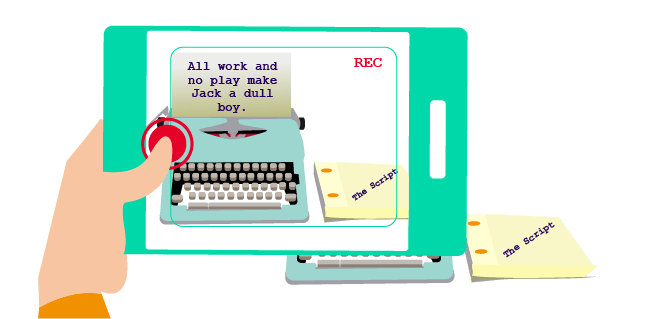
While there’s no need to become the next Spielberg, your video still needs to have the essential story elements.
That means it has to move along a plotline, even if that plot is learning how to tie a necktie.
Think like a storyteller when writing your script. Your videos should be short and only focus on a single thing.
If you’re offering a tutorial, for example, show how the activity is done and wrap it up.
Don’t try to cover too much. If the video goes longer than about five minutes, break it up into two.
Now, these are some types of video content you can create:
Tutorials
These are video versions of your step-by-step articles that show your audience how to get things done. They are short in nature, so they are easy to produce.
Product Demo
Before consumers make their purchase, they want to understand how your product works.
Uploading a video of your product in action lets them see for themselves how useful your product can be.
Just be careful not to tread into any hard-selling territory like those late-night infomercials you see on TV.
Reviews and Testimonials

Like demos, reviews allow consumers to know if what they are planning to buy is worth their money.
If you don’t wish to produce any video content by yourself, this type of content is great.
You’ll just need to seek out past clients or customers, offer free products for them, in exchange for them to create and upload a video review.
Webinars and Presentations
Another easy to produce video content is to record yourself giving a presentation. If you are camera shy, you don’t even have to appear on the screen.
Simply record your voice and a video of your screen as you click through slides in your slideshow, and you’ve got yourself a video presentation.
Webinars work the same way, except they are usually conducted live and involves interaction with the audience, such as answering questions.
Vlogs

Video blogging (or vlogs) are great for quick, easy to digest content for your audience. They can be done quickly with a smartphone camera, and they are great for sharing on social media.
If you have a strong personality, you should use vlogs to inject your persona to your content brand.
Audiences prefer to watch a face they know and love, rather than just hearing a familiar voice. This makes your brand much more relatable.
Producing video content isn’t for everyone. If you’re overwhelmed by the process of video production, or you don’t have the time, you can always hire a video producer.
A professional who is more experienced and savvy with video production may be able to knock out videos for you much faster than you could by yourself.
5. Interactive Content
These are the types of content that primarily offers interaction for the audience. It can be anything from a question tagged onto the end of a blog post to encourage discussion, to an app your customers can use.
Interactive content gets your fans engaged directly with your brand, which is excellent for building meaningful connections.
As technology progresses, the way we interact with media changes as well.
This is by no means an exhaustive list, but they are the most commonly used forms of interactive content for businesses.
Surveys

Give your customers online surveys and ask them for their feedback. People love to give their opinions and an added benefit for you is the data you receive.
This way, you can get feedback while also engaging your audience. Also, when your audience sees you implement the changes they’ve suggested, they feel appreciated, again, building that trust between you and them.
Contests and Sweepstakes
Organise an online contest with a valuable prize, such as a gift card or a free product. Online contests are fun and allow your audience to gain more exposure to your brand.
You can also use a contest as part of your survey to incentivise users to participate.
5. Apps and Games
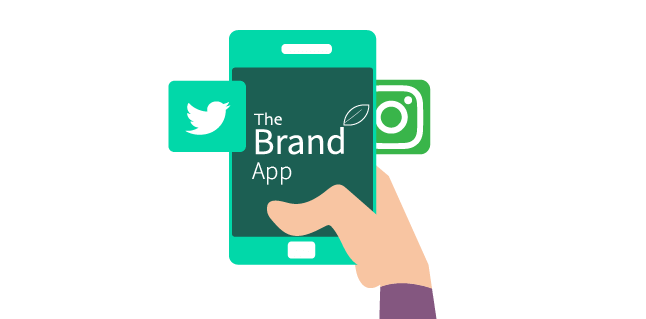
Nowadays, almost anyone owns a smartphone. In fact, there are over 5 billion smartphone owners in the world. Having an app that pushes fresh content to your audience is a great way to engage them.
The app also comes with an added benefit of tracking usage and demographics of your audience.
Games can both entertain and engage users for extended periods of time. Place in-game rewards that your audience can earn, such as discount coupons or free trials that they can use for their next purchase.
Choose the best types of content for your business
Think you’ve nailed down what types of content to start implementing into your overall content marketing strategy? Read on to part three of our guide to content marketing to learn some helpful tactics to help you drive results.
Missed part one? Not to worry. Check out part one of our guide; What is Content Marketing and Should I Be Doing It?
Alternatively, if you’re looking for some guidance on what types of content may be best for you and your brand, we’d be happy to arrange a call and speak with you directly.
